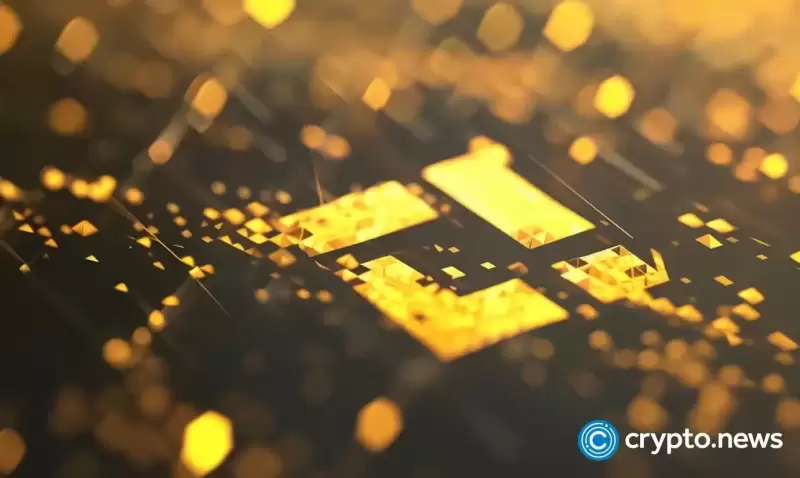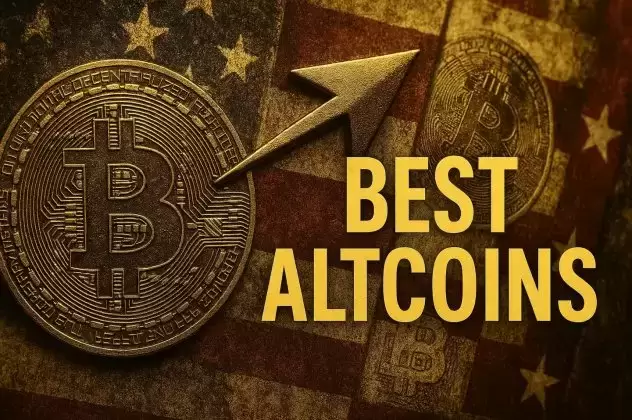 |
|
 |
|
 |
|
 |
|
 |
|
 |
|
 |
|
 |
|
 |
|
 |
|
 |
|
 |
|
 |
|
 |
|
 |
|
Cryptocurrency News Articles
Fast USDC: Reducing Cross-Chain Transfer Times from 20 Minutes to Under 60 Seconds
Apr 03, 2025 at 02:52 pm
This scenario plays out thousands of times a day. In February 2025 alone, over $158 million in USDC flowed from nine chains into Noble
A trader quickly spots a promising arbitrage opportunity on a Cosmos-based exchange, decides to intervene, and initiates a USDC transfer from Ethereum. Then, they wait. Twenty minutes pass in agonizing slow motion as market conditions shift with each passing second. By the time the funds arrive, predictably, the window of opportunity has vanished.
This scenario, or variations of it, play out potentially thousands of times a day. In February 2025 alone, over $158 million in USDC flowed from nine chains into Noble, the official issuer of native USDC in Cosmos. But even with this secure, native infrastructure in place, each transfer still forced users into a 20-minute limbo—an eternity in a digital economy where milliseconds matter.
Traditional Finance Is Setting the Pace
While crypto introduced the world to blockchain and interoperability, conventional finance has been busy perfecting their own settlement system. As a result, FedNow, the Federal Reserve’s instant payment service, is now resolving deals in the United States with outstanding speed. Financial institutions operate 24 hours a day, and typically, they can complete a payment within seconds.
Similarly, SEPA Instant, Europe’s banking network, handles interbank transactions in less than 10 seconds, and Visa Direct handles card transactions and runs time settled in minutes, working across the globe. These enhancements have naturally rescaled customer expectations.
When bank transfers take seconds and a stablecoin transfer takes a little longer, it seems like blockchain technology is frozen in digital slow motion. It’s no surprise that traders and DeFi users are abandoning time-sensitive strategies or get frustrated with cross-chain workflows requiring several wait times.
Where Crypto Already Excels
Despite these challenges, cryptocurrency offers several advantages over traditional finance. It’s interoperable, allowing for the transfer of value and liquidity across different blockchains and protocols. Moreover, crypto offers composability, enabling the combination of different financial primitives (tokens, protocols, and modules) to create novel applications and possibilities. Finally, crypto is programmable, empowering developers to build and deploy decentralized financial applications (dApps) with unique functionalities.
However, the critical gap has been in cross-chain transfers, particularly moving assets between blockchain ecosystems efficiently.
The Cross-Chain Challenge
Transferring USDC between chains, such as from Ethereum to Cosmos, is a multi-step process that can be time-consuming and inefficient. Here’s a breakdown of the typical steps involved:
1. User initiates the transfer on a supported EVM chain (e.g., Ethereum Mainnet).
2. Chain aggregator picks up the transfer.
3. After about 20 minutes, the transfer arrives at Noble Express.
4. Once in the Cosmos ecosystem, the user can select the desired chain (e.g., Osmosis).
5. After 30 to 60 seconds, the transfer completes via IBC.
6. User can swap and stake the arrived USDC.
Each of these steps adds to the overall delay and complexity, creating a mismatch between what users anticipate—instant money movement—and what the current infrastructure delivers.
A 20-minute delay is more than just an inconvenience for traders and DeFi users; it has the potential to drastically alter results. In volatile markets, trading possibilities might vanish within seconds. While assets are in transit, they are essentially frozen and cannot be accessed for other purposes, used as collateral, or deployed for yield.
Additionally, users typically abandon cross-chain workflows out of annoyance when they require several wait times. For instance, a typical method requires constant user attention and takes more than 20 minutes: transfer USDC from Ethereum to Noble (20 minutes), route it to Osmosis via IBC (30 to 60 seconds), swap, and stake. This fragmented experience creates a barrier to meaningful involvement for anyone attempting to move quickly in the cryptocurrency space.
But what if we could change this?
Introducing Fast USDC
Fast USDC solves the cross-chain delay problem without sacrificing security or decentralization. It provides a simple and efficient way to transfer USDC between blockchains quickly. Built on Agoric’s Orchestration technology, Fast USDC reduces USDC transfer times from over 20 minutes to under 60 seconds, meeting user expectations and blockchain reality.
When a transfer is detected, Agoric’s Orchestration contract advances the USDC from a decentralized liquidity pool directly to the user, eliminating the wait. Meanwhile, the original cross-chain transfer continues in the background via Circle’s CCTP, and once it settles, the liquidity pool is automatically reimbursed, ensuring the entire process remains economically sound and scalable.
This architecture is enabled by Agoric’s unique capability for asynchronous, long-lived smart contracts that can span multiple blocks and chains, something most blockchain environments can’t yet support.
Now live on Noble Express, Fast USDC is already delivering real results. With a simple toggle of the “Powered
Disclaimer:info@kdj.com
The information provided is not trading advice. kdj.com does not assume any responsibility for any investments made based on the information provided in this article. Cryptocurrencies are highly volatile and it is highly recommended that you invest with caution after thorough research!
If you believe that the content used on this website infringes your copyright, please contact us immediately (info@kdj.com) and we will delete it promptly.
-

- Bitcoin (BTC) reserve, monetary policy, and fears over the trade war are stirring the markets
- Apr 05, 2025 at 04:50 am
- input: Crypto markets declined in March due to concerns over the ongoing trade war and monetary policy. Still, traders have not given up on Bitcoin, according to a new report from Binance.
-

-

-

- Bitcoin (BTC) Price Prediction: Is the Correction Over? Bulls Struggle to Reclaim $90,000 Level
- Apr 05, 2025 at 04:45 am
- Bitcoin is currently trading above critical support, but bulls are struggling to reclaim the $90,000 level — a threshold that could signal the start of a meaningful recovery rally.
-

-

-

-

-

- Bitcoin's environment experiences fundamental shifts because Bitcoin halving combined with decentralized finance (BTCFi) changes how Bitcoin functions and shapes its marketplace
- Apr 05, 2025 at 04:30 am
- In April 2024, Bitcoin underwent reward mining cuts to 3.125 BTC, which strengthened Bitcoin's deflationary properties while drawing more investors to observe its future price evolution.



























































